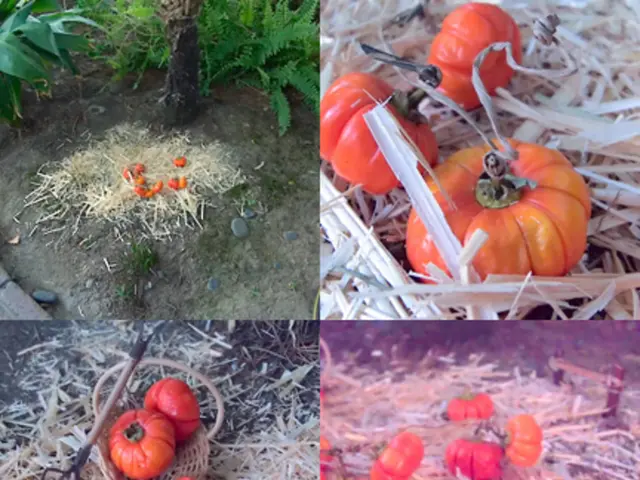Cause of Whitening in Plant Soil Examined
Mold and salt deposits are common issues that can affect the health of your plants. In this article, we'll share expert recommendations on how to identify, remove, and prevent these problems.
**Identifying Mold and Salt Deposits**
Mold often appears as a white, fuzzy, or powdery layer on the soil surface. It may also produce an unpleasant odor or spread to the plant's leaves and stems. Salt deposits, on the other hand, typically look like a white crust or powder on the soil surface or around the edges of the pot.
**Removing Mold from Plant Soil**
To remove mold, start by carefully scooping out the layer of mold from the soil surface to reduce spores. Replace the contaminated top layer of soil with fresh, sterile substrate. Improve drainage and aeration to prevent mold growth, ensuring pots have drainage holes and soil is not waterlogged. If the mold is extensive or the pot itself is affected, remove the plant, clean the pot thoroughly, and use new or sterilized soil to prevent recurrence. Organic options such as milk diluted in water sprayed daily on the soil can help eliminate mold without harming the plant. Isolate affected plants to prevent mold spread to others.
**Removing Salt Deposits**
To remove salt deposits, flush the soil thoroughly with clean, non-salty water to dissolve and wash away excess salt. Avoid using water with high salt concentration, as this can worsen salt buildup and damage plants. Consider using alternatives like salt-free water softening systems if you need softened water for irrigation, as sodium-rich soft water harms plants by limiting water absorption.
**Preventative Tips**
To prevent mold and salt deposits, water plants with fresh, low-salt water, ensure proper drainage, and avoid overwatering soil. Periodically check for salt accumulation (white crust) and mold growth to manage issues early.
By following these steps, you can effectively identify and safely remove both mold and salt deposits from plant soil, protecting plant health and ensuring better growth conditions.
Remember, mould on plant soil is often caused by overwatering, high humidity, and poor air circulation. To prevent mould, avoid overwatering, improve air circulation, and use well-draining potting mix. Salt deposits from fertiliser, water, and compost can also cause a white layer on plant soil. To prevent salt deposits, avoid watering through a saucer and allow the soil to dry out slightly between waterings.
In some cases, excessive mold can put your health at risk. If you suspect mold, take necessary precautions to protect yourself, such as wearing a mask and gloves, and ensure proper ventilation in your home for your plants.
Sources: [1] The Spruce, https://www.thespruce.com/how-to-get-rid-of-mold-on-plants-3166427 [2] Gardening Know How, https://www.gardeningknowhow.com/plant-problems/disease/how-to-get-rid-of-mold-on-plants.htm [3] University of Florida, https://edis.ifas.ufl.edu/pdffiles/PP/PP02000.pdf
- Incorporating gardening techniques into your home-and-garden lifestyle, such as ensuring proper drainage and preventing overwatering, can help prevent mold growth and salt deposits in your plants' soil.
- Maintaining a healthy lifestyle for your plants involves regular checks of the soil for signs of mold and salt deposits, as early detection can help prevent the spread of these harmful substances and promote a thriving, vibrant garden.








